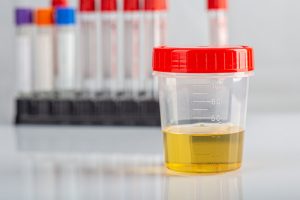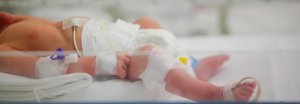
When it comes to pregnancy, it’s important to understand how certain everyday products can contain chemicals that can add unnecessary risks to mom and baby. This is especially important when hidden chemicals can put pregnant women at risk for preterm birth.
While there are a number of chemicals that can be cause for concern, one in particular that is most prevalent is phthalate exposure, which can increase the number of unnecessary risks, including preterm birth.
Understanding Phthalates
Phthalates are chemicals that are used in a variety of products within the home. These endocrine disruptors are chemicals which are added to plastic products for the purpose of giving said products a greater degree of strength and flexibility.
Among the most common packaging and products that contain phthalates are detergents, cosmetics, food packaging and solvents. They are also heavily prevalent in certain types of personal care products such as perfumes, lotions and deodorants.
How Phthalate Exposure Occurs
 Phthalate exposure can occur by the simple act of using everyday products for various uses. Although the highest risk comes from the use of cosmetics and eating or drinking foods or using products that have contacted packaging or materials that contain phthalates, although according to the Center for Disease Control and prevention (CDC), some exposure can also occur from breathing phthalate particles in the air.
Phthalate exposure can occur by the simple act of using everyday products for various uses. Although the highest risk comes from the use of cosmetics and eating or drinking foods or using products that have contacted packaging or materials that contain phthalates, although according to the Center for Disease Control and prevention (CDC), some exposure can also occur from breathing phthalate particles in the air.
In studies that measure phthalate metabolite presence in urine, CDC scientists measured 13 phthalate metabolites in a 2003 – 2004 study of 2,636 or more people aged six years and older. Within the study results, researchers found that adult women had even higher levels of metabolite presence than men as a result of phthalates that are used in soaps, body washes, shampoos, cosmetics, and similar personal care products.
Another study was performed on 6,000 pregnant women throughout the United States to examine the theory that exposure to phthalates increases the risk of preterm birth. What was found was that the women who had higher levels of the chemical in their urine were much more likely to go into labor earlier and give birth at least three or more weeks before their due date.
An epidemiologist from the National Institute of Environmental Health Sciences (HIEHS), which is a department at the National Institutes of Health (NIH) who was the lead author of the study published in JAMA Pediatrics explained the seriousness of the problem. She stressed that the health risks associated with preterm birth can pose dangers for both babies and mothers and that any risk factors must be identified and prevented.
Out of the women whose data were analyzed, nine percent, or 539 of them, delivered their babies prematurely. These women were found to have phthalate metabolites in 96 percent of their urine samples. This higher level of the chemicals was only directly linked to a slightly higher chance of preterm birth, and most of the women were found to have had phthalate exposure from using cosmetics such as nail polish.
These chemicals have been linked to a variety of adverse health effects, including elevated levels of oxidative stress, inflammation, disruption of thyroid hormone levels, endometriosis, fetal development, and even breast cancer. However, the threat it poses on increasing the risk of preterm birth is the newest concern.
Further Studies on Preterm Risk
Additional studies have previously been done that draw association of phthalate exposure and preterm birth including a prior study done between 2006 and 2008 which looked at pregnant women who planned to give birth at Brigham and Women’s Hospital in Boston and identified potential predictors of preeclampsia, a pregnancy-specific type of high blood pressure that poses serious risks to mothers and their babies.
 Urine samples were taken from the women and factors such as their age, race, smoking status, alcohol use and more. It was later seen that 130 of the women gave birth prematurely. The study only took single births into account due to multiple births commonly occurring before the 37th week of pregnancy.
Urine samples were taken from the women and factors such as their age, race, smoking status, alcohol use and more. It was later seen that 130 of the women gave birth prematurely. The study only took single births into account due to multiple births commonly occurring before the 37th week of pregnancy.
The findings revealed that women with higher phthalate metabolite in their urine during pregnancy are more likely to have their babies before the 37th week of gestation.
Possible Solutions to Lower Phthalate Exposure
Researchers noted in their studies that there was a 14 to 16 percent higher risk of preterm birth in pregnant women who were exposed to four of the 11 phthalates they discovered. They decided to simulate possible interventions to reduce phthalate exposure and determined that if they reduced the levels of phthalate metabolite by half, it could reduce preterm births by around 12 percent.
The researchers explained that while it’s definitely difficult to completely eliminate phthalates from daily life, changes in behavior could help reduce the risk of preterm birth in pregnant women. Reducing exposure can be done by reading the label on products for all ingredients and choosing alternatives that don’t contain phthalates. Avoiding eating processed foods that come in plastic containers and wrappings and consuming only fresh food cooked at home is another good way to start.
One easy way to recognize plastic items that may contain phthalate compounds is to look at the number inside the recycle symbol, usually molded into the plastic on the bottom of a product and choose products that contain the number 1 (which does not contain phthalates or BPA but should not be reused), or 2, 4 or 5 (all of which are not known to contain phthalates or BPA).
Additionally, it is best to avoid chewing or sucking on soft plastic or vinyl products, nail polish coated fingernails, or hair if it has been washed using products that may contain the chemical.
In addition to performing further studies to get a better understanding of how phthalate exposure can affect pregnancy, researches continue to look into further ways that expectant mothers can reduce their exposure and lower the risk of preterm birth. Until more information is identified, educating yourself, reading labels and selecting products that do not contain the chemical are the easiest ways to ensure you are limiting your exposure.


